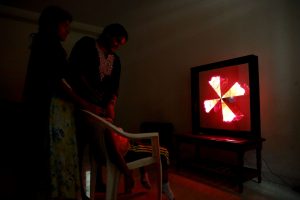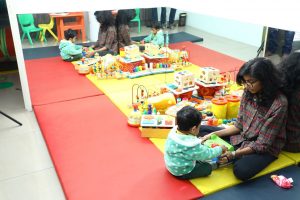What is Autism?
Autism spectrum disorder (ASD) is a neurodevelopmental disorder characterized by Problems with communication and social interaction. Children with ASD often Demonstrate restricted, repetitive, and stereotyped interests or patterns of behavior.
What is the incidence in India?
It is approximately 1 in 100 children in India. The overall incidence has increased by 300% in the last 15 years, and is continuing to increase yearly.
What are the common signs and symptoms of Autism?
Autism is typically seen between the ages of 1-2 years. There are a number of
features, but the 5 main features that most children have are –
a. Poor response & comprehension.
b. Poor eye contact.
c. Loss of speech or delayed speech – mainly communication.
d. Becomes restless and hyperactive.
e. Poor social interaction skills – people & peer interaction.
A typical case scenario is a child who is developing well till 1 – 1.5 years of
age……has attained good eye contact, response, comprehension and also few
disyllables. At this age, the child starts regressing rapidly in all areas and over the next few months ends up with only brief eye contact, response, becomes restless and has repetitive behaviors along with loss of speech and social / peer interaction skills. In short the child is in his / her own world most of the times.
What are the causes for Autism?
The exact cause of ASD is unknown. The most current research demonstrates that there’s no single cause. It is a combination of genetic, environmental, dietary other as yet unidentified factors.
What are the risk factors for Autism?
There are some come controllable risk factors & some non-controllable risk factors. That is…there are some risk factors that can be minimized and others that are not in the control of parents.
Non-controllable risk factors –
• Genetics
• Preterm or intra-uterine growth retardation (IUGR) babies.
• Children with history of birth asphyxia & subsequent developmental delay.
Controllable risk factors –
• Under stimulated child – Lack of adequate interaction & time with parents.
• Early & prolonged exposure to screen time (mobile / TV) without adequate
compensatory external or social stimulation.
What should I do if my child has features of Autism?
First step involved as a parent is to take the child to a pediatric neurologist for
consultation followed by a formal assessment with the child psychologist.
This will determine the extent and severity of Autism in the child. After this,
a customized treatment and therapy plan is designed for the child. (We will be
talking in detail about the various therapies available for autism in our next
blog article)
Will the child benefit from the treatment?
This may vary from patient to patient. Some patients make speedy
improvements by 3-6 months while in some cases patients take several
months, or years together to improve. The key here is – EARLY INTERVENTION & APPROPRIATE THERAPY ENSURES SPEEDY IMPROVEMENT IN MOST CHILDREN.
What is unique about autism treatment at Parijma?
Parijma is the earliest, one of the largest & most comprehensive exclusive pediatric multidisciplinary neuro-rehabilitation centers in the state with over 30 years of trusted neurology & neuro-rehab care. Some of our features for autism care include.
• Customized therapy plan for each child.
• Unique & in-house therapy protocols – example infant stimulation &
IMPRESSC therapy for severe and resistant autism.
• Unique sensory integration & visual stimulation therapy module
• Latest & in-house designed equipment – to get the best out of children with
autism.
• Multi-disciplinary team – from pediatric neurologists to speech &
occupational therapists (more than 6 specialties) who actively & collectively
monitor the child’s progress.
IMPROV THERAPY – At Parijma, we have now started a unique (one of
its kind) online rehabilitation therapy in speech therapy (and other specialties
too) called as IMPROV THERAPY. This can be done comfortably sitting at
your home. Our therapist will take you through the whole range of exercises
for you or your child online at your time of convenience. All that you need for
this purpose is a smartphone and stable internet connection.



